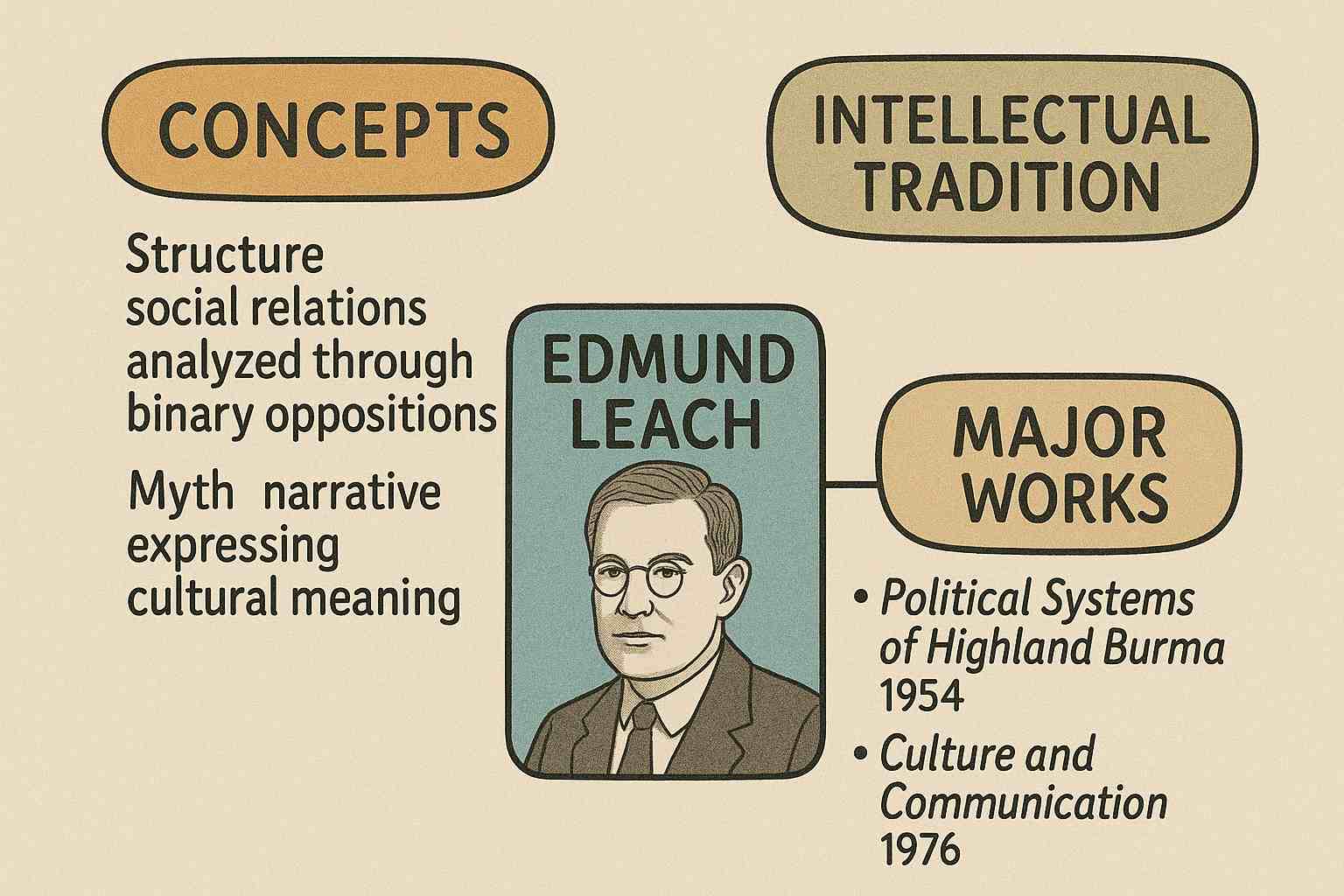Home » Social Thinkers » Thomas Kuhn
Thomas Kuhn
Table of Contents

Introduction
Thomas Samuel Kuhn (1922–1996) was an American physicist, historian, and philosopher of science whose work transformed how we understand scientific progress and its social underpinnings. Born on July 18, 1922, in Cincinnati, Ohio, Kuhn earned a B.S. (1943), M.S. (1946), and Ph.D. (1949) in physics from Harvard University. Initially a physicist, he shifted to the history and philosophy of science, influenced by Harvard’s interdisciplinary environment and his mentor, James Bryant Conant. Kuhn held academic positions at Harvard, UC Berkeley, Princeton, and MIT, where he developed his revolutionary ideas. His seminal book, The Structure of Scientific Revolutions (1962), introduced concepts like paradigms and scientific revolutions, challenging the notion of science as a linear accumulation of knowledge. Kuhn’s work provides a framework for analyzing how social and cultural factors shape knowledge production, making it essential for understanding the dynamics of intellectual and societal change.
Major Works and Contributions
Kuhn’s most influential work, The Structure of Scientific Revolutions (1962, expanded 1970), redefined scientific progress by proposing that science advances through stable periods of “normal science” interrupted by revolutionary paradigm shifts. Originally an article for the International Encyclopedia of Unified Science, its accessible style and bold arguments made it a landmark text, with over a million copies sold. It introduced paradigms, paradigm shifts, and incommensurability, reshaping multiple disciplines.
His earlier book, The Copernican Revolution (1957), analyzed the transition from Ptolemaic to heliocentric astronomy, highlighting the role of cultural and intellectual contexts in scientific change. Black-Body Theory and the Quantum Discontinuity (1987) traced the development of quantum mechanics, emphasizing the non-linear nature of scientific discovery. The Essential Tension (1977), a collection of essays, explored the balance between tradition and innovation in science, while The Road Since Structure (2000, posthumous) clarified his concepts in response to critics. These works underscore Kuhn’s focus on the historical and social dimensions of science, offering tools to study knowledge as a collective process.
Key Concepts
Paradigm and Paradigm Shift
Kuhn’s concept of a “paradigm” refers to a shared framework of theories, methods, and assumptions that guide a scientific community’s research. Paradigms define legitimate scientific problems and solutions, such as Newtonian mechanics before Einstein’s relativity. A “paradigm shift” occurs when anomalies challenge the existing framework, leading to a crisis and the adoption of a new paradigm that redefines scientific practice. For example, the shift from geocentrism to heliocentrism revolutionized astronomy. This concept illuminates how shared beliefs shape knowledge production and how disruptions lead to transformative change, applicable to intellectual and social shifts.
Normal Science and Scientific Revolutions
Kuhn distinguished between “normal science” and “scientific revolutions.” Normal science involves puzzle-solving within a paradigm, where scientists refine theories and address minor anomalies, as seen in astronomers refining Ptolemaic orbits. Scientific revolutions occur when unresolved anomalies trigger a crisis, leading to a new paradigm, as in the Copernican revolution. This cyclical model challenges the idea of science as steady progress, emphasizing periods of stability punctuated by radical change. It provides a lens to analyze how established systems—scientific or social—evolve through disruption.
Incommensurability
Kuhn’s “incommensurability” argues that competing paradigms are often so fundamentally different that direct comparison is problematic. For instance, Newtonian and Einsteinian physics use distinct concepts of time and space, making them partially incompatible. Incommensurability suggests that scientific progress is influenced by social and cultural factors, as scientists’ worldviews are shaped by their paradigms. This concept highlights the subjective elements in knowledge disputes, offering insights into how differing perspectives resist reconciliation in scientific or societal conflicts.
Scientific Communities and Social Construction
Kuhn viewed science as a social activity, driven by communities that share training, values, and practices. Paradigms are sustained by these communities, such as academic disciplines or research groups, which determine what counts as valid knowledge. This social construction of science emphasizes the role of consensus, authority, and institutional norms in shaping truth. The concept connects to broader analyses of how collective practices and power dynamics influence knowledge production, applicable to professional networks or institutional frameworks.
Influence on Sociology and Philosophy of Science
Kuhn’s ideas revolutionized the understanding of science by challenging positivist assumptions of objectivity. His work influenced sociologists like Robert K. Merton, who studied scientific communities, and Barry Barnes, whose Strong Programme in the sociology of scientific knowledge built on Kuhn’s social constructionism. Philosophers like Imre Lakatos engaged with Kuhn’s paradigm shifts to refine models of scientific progress, while Paul Feyerabend extended incommensurability to argue for epistemological pluralism, though Kuhn rejected such radical interpretations.
Kuhn’s concepts also shaped social theory, with scholars like Anthony Giddens applying paradigm-like frameworks to social change. His work catalyzed the emergence of science and technology studies (STS), which examines how social factors shape scientific development. Critics, such as Karl Popper, argued that incommensurability undermined scientific rationality, while Steve Fuller critiqued Kuhn’s limited focus on power dynamics within scientific communities. Nonetheless, Kuhn’s emphasis on the social nature of science made him a pivotal figure in the sociology of knowledge, influencing interdisciplinary research on science and society.
Legacy and Contemporary Relevance
Kuhn’s The Structure of Scientific Revolutions remains a foundational text across sociology, philosophy, and history of science. Its concepts have been applied beyond science to fields like education, where shifts in teaching methods resemble paradigm changes, and management, where organizational transformations follow Kuhnian patterns. The book’s influence extends to cultural studies, with scholars like Donna Haraway using it to analyze technoscience and social issues
The paradigm concept is relevant for analyzing social transformations, such as shifts in environmental policies or gender norms, while incommensurability informs studies of ideological conflicts, like debates over climate science or public health. Kuhn’s focus on scientific communities resonates with research on institutional biases, such as in AI development or medical research funding. His ideas also prompt ethical reflection on the social construction of knowledge, particularly in contexts like genetic engineering or data privacy. Critics argue that Kuhn’s model overemphasizes discontinuity and neglects incremental progress, and his focus on Western science limits global applicability. Yet, his framework remains vital for understanding how collective beliefs and power shape knowledge and societal change.
References
- Kuhn, T. S. (1962). The Structure of Scientific Revolutions. University of Chicago Press.
- Kuhn, T. S. (1957). The Copernican Revolution. Harvard University Press.
- Kuhn, Dahrendorf, R. (1977). The Essential Tension: Selected Studies in Scientific Tradition and Change. University of Chicago Press.
 Thomas Kuhn in his book 'The structure of scientific revolution' emphasizes the way the overthrow of a whole system is involved in the change from one theory to another. A mature science is dominated by a single shared frame of reference- its scientists agree on fundamentals. The frame of reference that Kuhn initially called a paradigm and later termed the disciplinary matrix provides an accepted setting within which research is done. He terms this research as normal science that is a kind of puzzle solving. A researcher doing normal science has a problem but knows roughly what the answer to it will look like. The research will be done within the boundaries of the paradigm that tells what the solution ought to be and what methods will find it.
Thomas Kuhn in his book 'The structure of scientific revolution' emphasizes the way the overthrow of a whole system is involved in the change from one theory to another. A mature science is dominated by a single shared frame of reference- its scientists agree on fundamentals. The frame of reference that Kuhn initially called a paradigm and later termed the disciplinary matrix provides an accepted setting within which research is done. He terms this research as normal science that is a kind of puzzle solving. A researcher doing normal science has a problem but knows roughly what the answer to it will look like. The research will be done within the boundaries of the paradigm that tells what the solution ought to be and what methods will find it.
However as work under a given paradigm proceeds, anomalies accumulate. Some anomalies do not fit the basic framework and will be taken to suggest that there is something wrong with the framework and that a whole new one is required. The bringing in of the new paradigm is the scientific revolution transforming the way in which the discipline looks at things reorganizing the way scientists go about their business, introducing new research technologies and techniques. The notion of revolution is used by Kuhn to suggest that there are some close parallels with political overturnings than might be imagined. The scientific revolution tends to involve a struggle between generations. Those who have been brought up on the old paradigm tend to adhere to it and whilst the young scientists who take up the new one only finally triumph throughout the discipline when the older generation retire or die off.
The pivotal importance of Kuhn's work is in his ideas about the relations between different paradigms. The conflict between generations shows something that the members of the older generation do not accept that their paradigm has been refuted. They do not accept that evidence has shown that their framework is wrong and that a new framework is better. There is no evidence that unequivocally shows that a framework is wrong. Adjustments can be made to the framework to accommodate things that on the first sight do not fit.
The importance of Kuhn lies in the fact that the things that we believe about the world are shaped also by social matters and not by evidence alone. His interpretation of ideas has had considerable influence on sociological thinking.
|
|

 |
© 2025 sociologyguide |
 |













